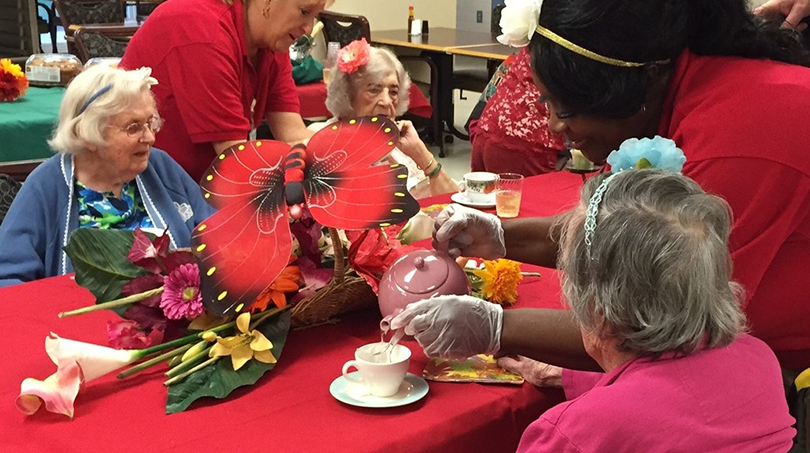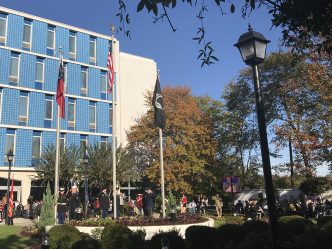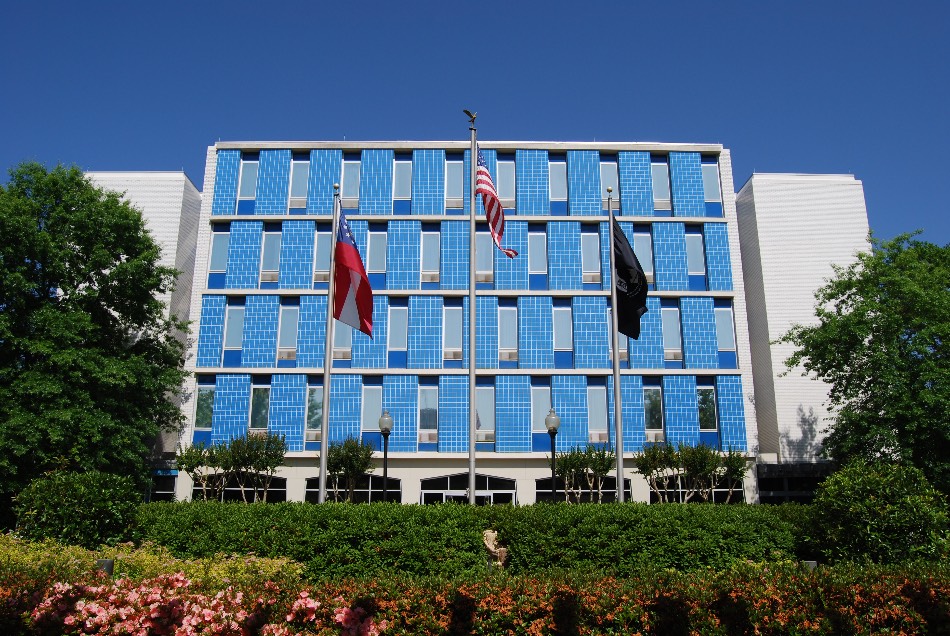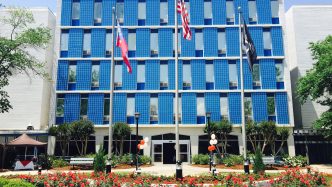AUGUSTA, Ga. – Retired Colonel Judy Mosbey served her country faithfully during World War II. This week, the staff at Georgia War Veterans Nursing Home served her.
What was on the menu? Hot tea, finger sandwiches and cake.
“No men are allowed,” said Georgia War’s Activities Coordinator Kimberly Thomas. “This is one event that we do exclusively for our female veterans to thank them for all they’ve done for us.”
That meant Associate Director Carlton Deese wasn’t supposed to be there, but he only stopped by for a couple of minutes to chat with the residents and take a little friendly ribbing from one of the ladies.
Deese said there are approximately 154 veterans currently living at the nursing home; however, only about a dozen of them are women. That’s why singling them out with special events like the Ladies’ Tea is so important.
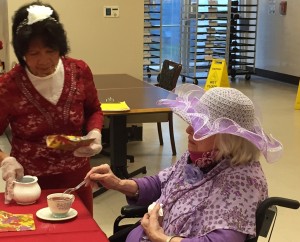
Mosbey wore a lavender hat and scarf for the occasion. The former flight instructor served in the Air Force for nearly 30 years, alongside her husband, who was also a pilot. Seventy-five-year-old Mosbey said that back when she enlisted, she realized that she should learn to fly, too, so that she could keep up with him.
The Women Airforce Service Pilots (WASP) program was created in August 1943, because of a shortage of male pilots in World War II, according to the Women of World War II website. These female civilian pilots served under military command and flew planes within the U.S., to free up male combat pilots for overseas duty. They had the privileges of officers, but were never formally adopted into the Army Air Force. However, in November 1977, President Carter signed a bill granting WWII veterans’ status for former WASPs.
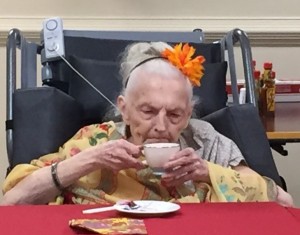
Sipping tea at the table on Mosbey’s left and draped in a yellow floral scarf was Vera Molini, 93, who served in the Navy. The WAVES (Women Accepted for Volunteer Emergency Service) program was created in August 1942 in response to the need for additional military personnel during World War II. From the very beginning, the WAVES were an official part of the Navy, and its members held the same rank and ratings as male personnel.
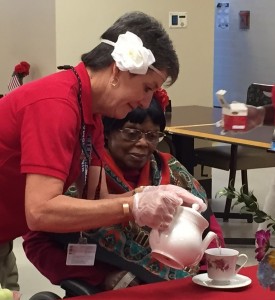
Pauline Walker, 82, was clothed in shades of red, which included a garnet-colored carnation headband and a crimson shirt and scarf. Walker served as a secretary in the Army during the war.
Perhaps the most articulate of the ladies at the tea party was Ruby Kleinrath, 93. Army Nurse Corps veterans like Kleinrath worked close to the front lines in WW II, serving in field hospitals and evacuation hospitals, on hospital trains and ships, and as flight nurses on medical transport planes. The skill and dedication of these nurses contributed to lower post-injury mortality rates among American military forces in every theater of the war, according to the website.
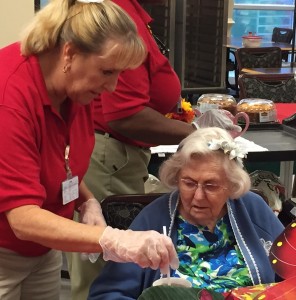
In all, nine veterans were gathered around the table in the first-floor cafeteria for the Ladies’ Tea on Sept. 23. Organizers piped in music from the 1940s and ’50s through a CD player to create a more nostalgic event. They also helped each resident create fall decorations for their doors, by attaching autumn leaves and miniature scarecrows to grapevine wreaths.
The Georgia War Veterans Nursing Home, or what many refer to fondly as the “Blue Goose,” is a 192-bed skilled nursing facility owned by the Georgia Department of Veterans Service and operated by Georgia Regents University. Throughout its 45-year history of serving the veteran community, Georgia War Veterans Nursing Home has placed a strong emphasis on ensuring that the individual needs of every veteran patient are met.
The home was recently ranked in the nation’s top 15 percent of senior health care providers for patient satisfaction by Pinnacle Quality Insight.
 Augusta University
Augusta University
